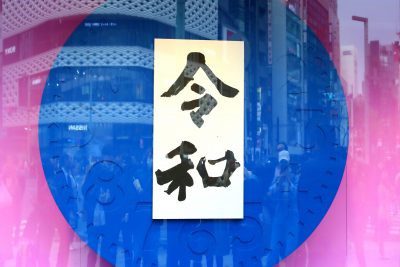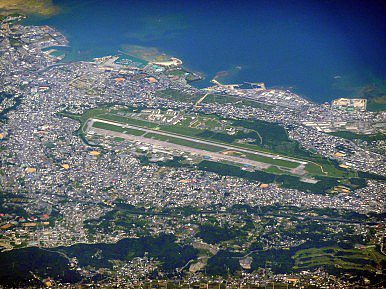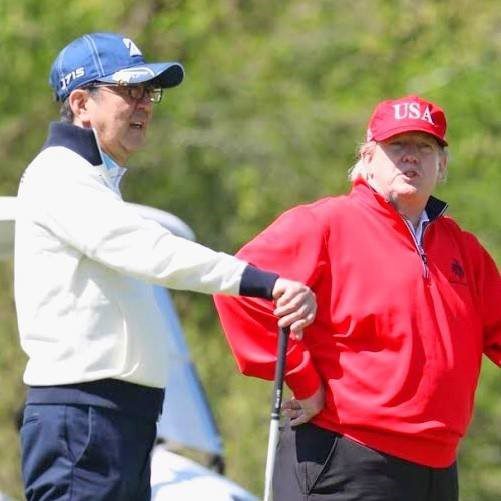Articles
The US and Japanese governments continued to work at maintaining a steadfast alliance, yet there were issues that could upend the relationship. After several months of anticipation, there was some progress on trade negotiations. While the US hoped to close the deal before President Trump visits Japan in late May, differences over the scope of the agreement and a number of difficult issues related to automobiles, agriculture, and currency rates remained. Meanwhile, domestic pressure over the Futenma relocation project returned to the news with a new referendum that strongly rejected the move. The introduction of the Reiwa era at the end of April served as a brief respite as the alliance partners sought to align interests following the “no deal” US-DPRK summit in Hanoi.
Introduction
The US and Japanese governments continue to work hard at being the steadiest alliance. Yet there are issues to be negotiated, bilaterally and in the region, that could upend the carefully orchestrated relationship between Prime Minister Abe Shinzo and President Donald Trump. Early in 2019, negotiators met to discuss the way forward for a US-Japan trade deal.
Of course, domestic pressures continue to shape alliance diplomacy. In Okinawa, the new governor implemented his campaign promise to hold a prefecture-wide referendum. Media in Tokyo and in Naha read the results quite differently, however. April brought local elections in Japan with observers trying to read the tea leaves as to how the Liberal Democratic Party will fare in the 2019 Upper House election.
The failure of the second Trump-Kim summit resulted once more in an attempt by Prime Minister Abe to present a united front between Tokyo and Washington on this most troubling security challenge. Yet concerns were visible under the surface. A 2+2 meeting sought to assuage those concerns.
But it was the abdication of Emperor Akihito that consumed attention in Japan. On April 30, the reign of Japan’s 125th emperor came to an end, and the new era of Reiwa, translated by the Japanese government as “beautiful harmony,” began. Even Americans seemed captivated by the pomp and ceremony in Tokyo, marking an end to the Heisei era with the “retirement” of the 85-year-old Emperor Akihito and Empress Michiko, and bringing a next-generation imperial couple, Emperor Naruhito and Empress Masako, into the global spotlight.

The announcement of the name of the new imperial era. Photo: AFLO
Trade talks slowly begin to gain steam
After a busy fall, US-Japan trade talks initially got off to a slow start in 2019. Prime Minister Abe and President Trump first agreed to begin negotiations on a bilateral trade agreement on goods at their summit in September 2018. The US Trade Representative (USTR) then released a set of specific negotiating objectives on Dec. 21, setting the stage for talks to begin in early 2019. But no talks ensued. Instead, the USTR began the year by first confronting the longest government shutdown in US history in January, and then focused most of its attention throughout February and March on trade negotiations with China rather than Japan.
The first round of US-Japan trade talks was eventually held April 15-16 in Washington. After the slow start, many Trump administration officials publicly voiced their desire for a speedy resolution to the deal in time for the president’s visit to Japan in May. On April 12, Agriculture Secretary Sonny Perdue said he was seeking a “very quick agreement” with Japan to reduce tariffs on agricultural goods ahead of broader efforts to reach a more comprehensive trade deal. On April 26, President Trump similarly expressed optimism in his summit with Prime Minister Abe that an agreement could be announced prior to his Japan trip. White House Economic Adviser Larry Kudlow again stated on May 3 that a deal could be finalized as soon as late May.
Japanese officials may be in less of a rush to conclude a deal than their US counterparts. Prime Minister Abe’s administration is entering negotiations with the US fresh off concluding two major multilateral trade agreements last year thanks to the Japan-EU Economic Partnership Agreement and the Comprehensive and Progressive Trans-Pacific Partnership Agreement (CPTPP). The signing of these agreements has put significant pressure on US suppliers of agricultural products such as wine, beef, and dairy, as these companies now face much higher tariffs in the Japanese market than their competitors in Europe and Australia. While the US is hoping to quickly reassure its agricultural sector with a new deal, Japan’s chief trade negotiator, Motegi Toshimitsu, downplayed the likelihood of a speedy resolution on April 26 when he noted that any trade deal would likely require congressional approval. There were also some reports that Trump agreed to a request from Abe in their meeting to delay further progress on a trade agreement until after Japan’s Upper House elections in July.
While there has been much discussion about the pace of negotiations, both the US and Japan will first need to agree on the scope of their talks. Japanese negotiators continue to discuss the deal as a trade agreement on goods, with the inclusion of a few services, while US officials are pushing for a full free-trade agreement (FTA). There are also a number of sticking points that will be tricky to negotiate, including sensitive topics such as automobiles, agriculture, and currency. The Trump administration initially pushed Japan to the negotiating table by threatening to raise the tariff on Japanese automobiles to 20%, whereas the Abe administration is hoping that these tariffs can be eliminated altogether. Japan has said that it is willing to offer the US the same tariff rates on agriculture that it negotiated with the EU and CPTPP member countries, yet Trump has long said that he seeks a “better deal” than the CPTPP. Treasury Secretary Steven Mnuchin stated on April 13 that any trade agreement will include a commitment from Japan to refrain from currency manipulation, while Motegi has repeatedly stressed that currency rates should be discussed in a separate context.
As the trade talks move forward, it is likely that the political calendar will continue to affect the speed of negotiations. Officials in both countries will need to move quickly if they are hoping that Trump will have something concrete to announce alongside Abe in late May. Looking ahead to next year, Trump no doubt hopes that a broader agreement can be concluded well before the next US presidential election. A positive resolution of a US-Japan trade deal may be especially important for Trump, as the fate of his other trade objectives is more uncertain. Trump has repeatedly praised his new trade agreement with Canada and Mexico, including in his most recent State of the Union address on Feb. 5, but both Republicans and Democrats have said the deal will need significant changes before it is passed in Congress. Trump has similarly promised that a major trade deal with China will be concluded soon, but it remains to be seen how swiftly tariffs will be lifted. As Chinese negotiators arrived in Washington in early May for another round of negotiations, Trump welcomed their arrival by threatening to expand tariffs to include all Chinese goods if a deal could not be reached quickly enough.
A referendum in Okinawa
Newly elected Okinawa Gov. Denny Tamaki fulfilled his campaign promise to hold a referendum on the government’s plan to relocate facilities for the US Marines from the Futenma base in Ginowan City to Camp Schwab in the less populated city of Nago. In September 2016, the Naha branch of the Fukuoka High Court decided in favor of the national government in a lawsuit filed by Okinawa prefecture asking that the relocation plan be terminated.

Aerial view of Futenma Air Station. Photo: Wikimedia Commons
On Feb. 24, 53% of Okinawa’s eligible voters turned out to vote in the referendum, a lower number than voted in the gubernatorial election last September. Nonetheless, of those who turned out, 73% voted against Tokyo’s base relocation plan while 19% voted for it. The referendum is nonbinding, but the governor argued that he would be obligated to act should one fourth of Okinawa’s voters oppose the base. The 434,000 who voted against the government’s base plan represented 37% of the 1.16 million voters in Japan’s southern prefecture.
After the referendum, however, Prime Minister Abe announced that he would proceed with the construction plan. Gov. Tamaki visited the prime minister’s office on March 1 to convey the results and to ask that the central government reconsider its base relocation plan. Tamaki also visited the US Embassy to meet Deputy Chief of Mission Joseph Young, who said that he would pass on the message to Ambassador William Hagerty. However, Hagerty had previously told reporters the day after the referendum that while he hoped to continue the good relationship between the US and Okinawa, “the only option on the table today is the facility in Henoko.”
The breakdown of talks in Hanoi
The second summit between President Trump and North Korean Chairman Kim Jong Un ended without progress on the aim of denuclearization. Held in Hanoi on Feb. 27-28, the follow-up meeting to last year’s summit in Singapore was expected to yield agreement on concrete steps for both North Korea and the United States to move toward reconciling differences over denuclearization. Yet in a surprising move, Trump ended the discussions abruptly, leaving allies in the region scrambling to explain what it meant for the future of Northeast Asia.
Prime Minister Abe received a phone call from the US president, and in his press conference stated his support for the decision to call off talks. Claiming that no deal was better than a bad deal, Abe’s response to Hanoi reflected what had been Japan’s position all along: international sanctions must be maintained on North Korea until steps are taken toward full denuclearization. This contrasted with the South Korean position, which was more tolerant of some sanctions being relaxed in the course of their negotiations with the North. Tokyo has worked alongside other UN members to monitor compliance with existing sanctions, and continues to share information with the US and other partners such as Australia, France, and the UK.
Japan’s interests in the effort to negotiate with the Kim regime center around three priorities. The first is the continued desire for denuclearization. A nuclear North Korea poses a serious threat to Japan, and to the reliability of the US extended deterrent in Asia. Second, Pyongyang’s missile arsenal has already had a demonstrable impact on Japanese security. Recent short-range missile launches by North Korea once more raise the specter of increased tensions between Pyongyang and Washington, despite public statements (including tweets by the president) designed to minimize their importance. Finally, Prime Minister Abe must resolve the difficult issue of abducted Japanese citizens in North Korea. The Kim regime has yet to account for the 12 remaining Japanese who were confirmed as abductees, and there are many other cases of suspected abductions that need to be addressed. In Abe’s press conference after the breakdown of talks in Hanoi, after saying that the US made the right decision to call off the talks, he stated that he thought it was time that he spoke directly to Kim about what was at stake for Japan.
A busy summer ahead
Despite the 2+2 meeting between Japan’s defense and foreign affairs ministers and the US secretaries of state and defense, there seemed to be little substantive progress on alliance issues in early 2019. Even Prime Minister Abe’s visit to Washington on April 26-27 seemed less about problem solving and more about cementing personal ties.

Abe and Trump take in a round of golf in April. Photo: Facebook
The real test of the Abe-Trump approach will come in the months ahead. For the bilateral relationship, perhaps nothing looms larger than the terms of the impending trade deal. Abe’s LDP faces considerable headwinds going into the Upper House elections this summer, and a poor outcome on trade will hurt Abe at the polls. The Trump administration continues to struggle in its effort to bring Beijing to heel on its predatory trade behavior, and the US-Japan deal could easily become collateral damage if there are perceptions that Washington has come up short in that effort.
Prime Minister Abe has his work cut out for him this summer. Japan hosts the G20 Summit in June, and Japan’s prime minster wants to solidify his credentials as an ardent supporter of the global liberal order. He will be surrounded by the leaders of other US allies that have criticized the Trump administration for its undermining of that order. China’s President Xi Jinping will also be there to remind Abe of their common interest in opposing Washington’s protectionism.
The Upper House elections follow in July, and Abe and his LDP have for the first time a coalition of supporters that could be corralled into a formal debate on constitutional revision. Maintaining that coalition could be hard, however. A hike in the consumption tax looms in the fall, an issue that often makes Upper House elections in particular a referendum on the government.
President Trump will also visit Japan in late May as the first state visitor of the new Japanese Emperor. Much has been made of this invitation, a signal that Japan still sees the United States as its most valuable partner. Fingers will be crossed that all goes well, both for the sake of the new emperor and empress but also for the US-Japan alliance.
Jan. 9, 2019: US Trade Representative Robert Lighthizer, Minister of Economy, Trade and Industry Seko Hiroshige, and European Commissioner for Trade Cecilia Malmstrom hold a trilateral meeting on trade in Washington, DC.
Jan. 17, 2019: Prime Minister Abe Shinzo meets Adm. John Richardson, chief of US Navy operations, in Tokyo.
Jan. 19, 2019: PM Abe attends the first Trans-Pacific Partnership Commission held in Tokyo.
Jan. 20, 2019: Secretary of State Michael Pompeo speaks with Japanese Foreign Minister Kono Taro by phone about engagement with North Korea.
Feb. 1, 2019: Under Secretary of State for Arms Control and International Security Andrea Thompson travels to Japan to discuss defense trade and nonproliferation.
Feb. 5, 2019: Lt. Gen. Kevin Schneider takes over as the new commander of US Forces Japan.
Feb. 15, 2019: President Trump says PM nominated him for a Nobel Peace Prize.
Feb. 16, 2019: Reports suggest that PM Abe nominated President Trump for a Nobel Peace Prize at the request of the US government.
Feb. 18, 2019: PM Abe says he will not comment on President Trump’s announcement that Abe nominated him for a Nobel Peace Prize.
Feb. 19, 2019: PM Abe meets US Congressional Study Group on Japan delegation in Tokyo.
Feb. 19, 2019: Assistant Secretary of State for Energy Resources Francis Fannon travels to Japan to discuss energy security and regional cooperation on energy issues.
Feb. 22, 2019: Secretary of State Pompeo speaks by phone with Foreign Minister Kono about engagement with North Korea.
Feb. 24, 2019: In a prefecture-wide referendum on the relocation of US Marine Corps Air Station Futenma, 72% of Okinawan voters say that they oppose the Henoko relocation plan.
Feb. 27, 2019: President Trump meets North Korea Chairman Kim Jong Un in Hanoi.
Feb. 28, 2019: PM Abe and President Trump speak by telephone about US-DPRK summit.
March 19, 2019: United States and Japan release a joint statement on the Japan-United States Strategic Energy Partnership.
March 20, 2019: PM Abe meets delegation of legislators participating in the US-Japan Legislative Exchange Program in Tokyo.
March 20-23, 2019: First TOFU (Think of Okinawa’s Future in the United States) program participants visit Washington, DC for meetings at the Department of State and White House.
March 24-26, 2019: Second TOFU program participants visit New York for meetings at the United Nations and with former ambassador to Japan Caroline Kennedy.
March 26, 2019: PM Abe meets Gen. Robert Neller, commandant of the United States Marine Corps in Tokyo.
April 7, 2019: First round of unified local elections is held in Japan.
April 8, 2019: PM Abe publishes article on women’s empowerment in Japan in Medium.
April 15-16, 2019: US Trade Representative Robert Lighthizer and Fiscal Policy Minister Motegi Toshimitsu hold talks on a US-Japan trade deal in Washington, DC.
April 19, 2019: Secretary of State Pompeo and Acting Secretary of Defense Patrick Shanahan host Foreign Minister Kono and Defense Minister Iwaya Takeshi in Washington, DC for a Security Consultative Committee (“2+2”) meeting. Joint Statement, Fact Sheet, Remarks to the Press
April 19, 2019: President Trump and First Lady Melania Trump announce that they will pay a state visit to Japan from May 25-28, 2019.
April 21, 2019: Second round of unified local elections is held in Japan.
April 25, 2019: Foreign Minister Kono’s interview is published in the Washington Post.
April 26-27, 2019: PM Abe meets President Trump in Washington, DC. Remarks.
April 26, 2019: Finance Minister Aso Taro meets Treasury Secretary Steven Mnuchin in Washington, DC.
April 30, 2019: Emperor Akihito abdicates his position as emperor of Japan.
May 1, 2019: Emperor Naruhito succeeds Akihito as the new emperor of Japan.